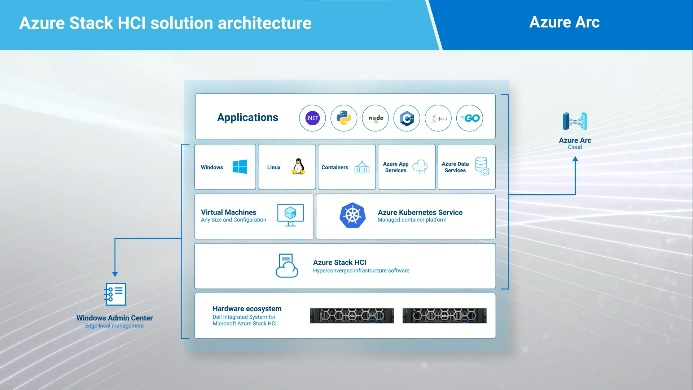

Dell and Azure Stack HCI Made Easy: the Video Series
Tue, 25 Apr 2023 17:05:23 -0000
|Read Time: 0 minutes
It is incredible how time flies and it still feels like yesterday since December 10, 2020, when Microsoft initially released Azure Stack HCI. 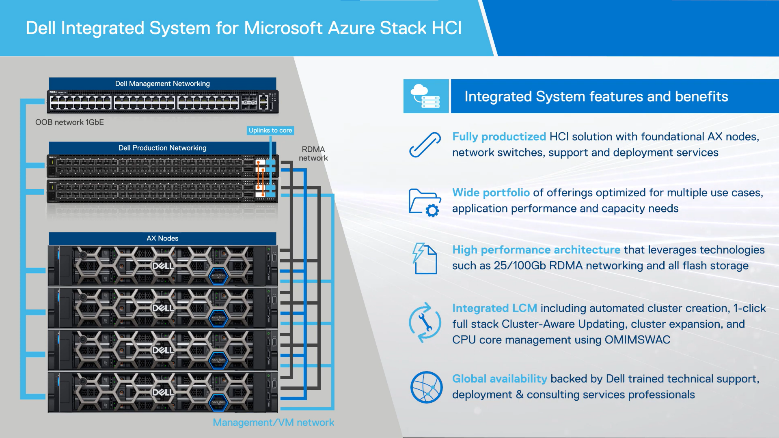
Today, Azure Stack HCI is a huge success and, in combination with Azure Arc, the foundation for any real Microsoft hybrid strategy.
But believe it or not, 850+ days later, Azure Stack HCI is still a big unknown for part of the Microsoft community. In our daily customer engagements, we keep on observing that there are knowledge gaps around the Azure Stack HCI program itself and the partner ecosystem that surrounds it.
In these circumstances, we have decided to take action and create a very short and easy-to-follow video series explaining everything you need to know about Azure Stack HCI from a technical perspective.
What you will find
This initial video training library consist of five videos, each averaging seven minutes in length. Here’s a summary of what you will discover in each of the videos:
Video: What Is Inside Azure Stack HCI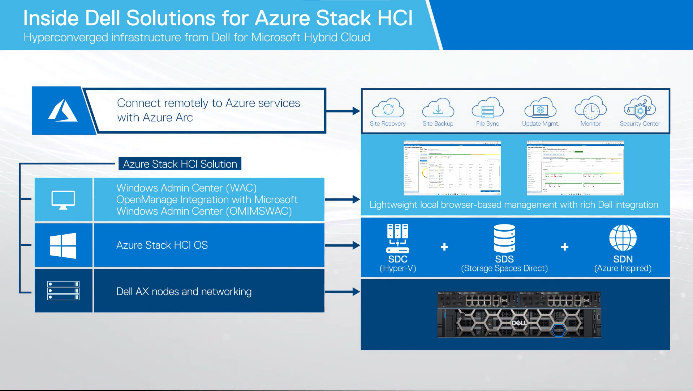
Learn the basics and fundamental components of Azure Stack HCI and get to know the Dell Integrated System for Microsoft Azure Stack HCI platform.
Meet the AX node platform and take the Dell Integrated System for Microsoft Azure Stack HCI route to deliver consistent Azure Stack HCI deployments.
Video: Topology and networking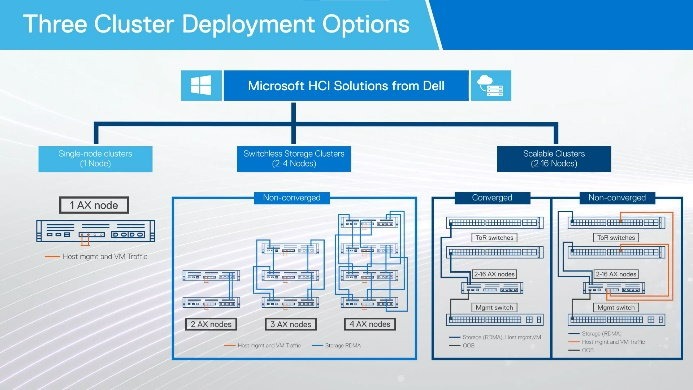
Explore topology and network deployment options for Dell Integrated System for Microsoft Azure Stack HCI. Make good Azure Stack HCI environments even better with the Dell PowerSwitch family.
Learn about Azure Stack HCI local management with Windows Admin Center and OpenManage. This is the perfect combination for quick and easy controlled local deployments…and a solid foundation for true hybrid management.
Describes end to end deployment and support for the Dell Integrated System for Microsoft Azure Stack HCI platform with ProDeploy and ProSupport services.
Will there be more?
Absolutely.
We are already working on the next series where we’ll be covering other important topics that are beyond the scope for this initial launch (such as best practices and stretched clusters).
Conclusion
There is no doubt that Azure Stack HCI is a very hot topic. In fact, it is the key foundational element that enables a true Microsoft hybrid strategy by delivering on-premises infrastructure fully integrated with Azure. This video series explains the different elements that make this possible.
All videos in the series are important, none should be skipped… but if there is one not to be missed, please, go for Dell Azure Stack HCI: Local Management. This topic is actually the hook for the next release (Hint -> Hybrid management is the next big thing!).
Thanks for reading and… stay tuned for additional videos on the Info Hub!
Author: Ignacio Borrero, Senior Principal Engineer, Technical Marketing Dell CI & HCI
Related Blog Posts

2023 Updates for Azure Stack HCI and Hub (Part I)
Wed, 30 Aug 2023 22:05:17 -0000
|Read Time: 0 minutes
The first half of 2023 has been quite prolific for the Dell Azure Stack HCI ecosystem, providing many important incremental updates in the platform. This article summarizes the most relevant changes inside the program.
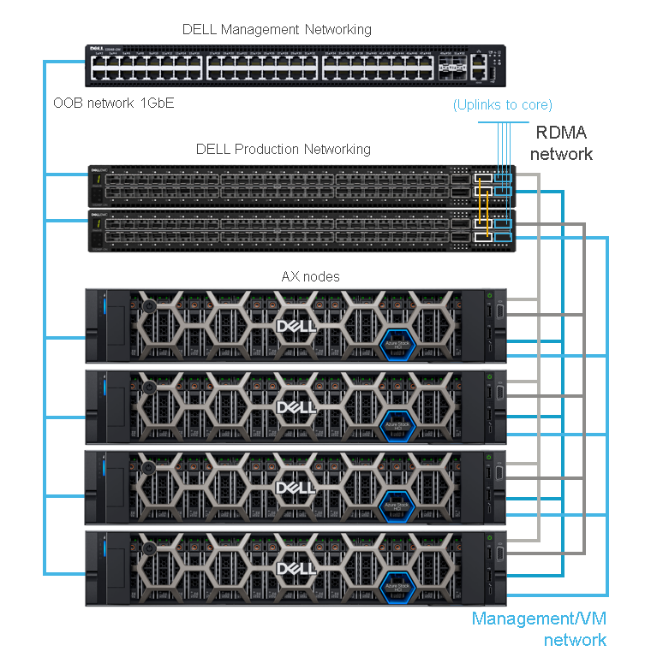 Azure Stack HCI
Azure Stack HCI
Dell Integrated System for Microsoft Azure Stack HCI delivers a fully productized, validated, and supported hyperconverged infrastructure solution that enables organizations to modernize their infrastructure for improved application uptime and performance, simplified management and operations, and lower total cost of ownership. The solution integrates the software-defined compute, storage, and networking features of Microsoft Azure Stack HCI with AX nodes from Dell to offer the high-performance, scalable, and secure foundation needed for a software-defined infrastructure.
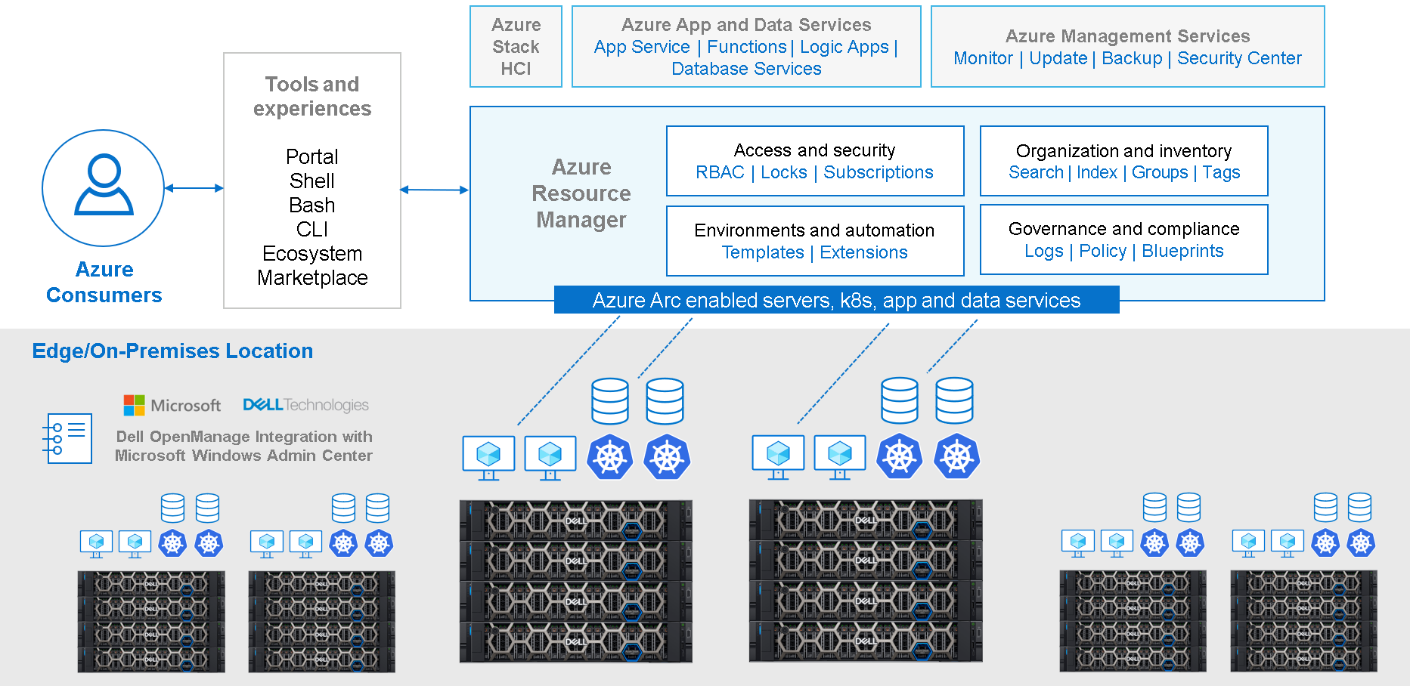
With Azure Arc, we can now unlock new hybrid scenarios for customers by extending Azure services and management to our HCI infrastructure. This allows customers to build, operate, and manage all their resources for traditional, cloud-native, and distributed edge applications in a consistent way across the entire IT estate.
What’s new with Azure Stack HCI?
A lot. There have been so many updates in the Azure Stack HCI front that it is difficult to detail all of them in just a single blog. So, let’s focus on the most important ones.
Azure Stack HCI software and hardware updates
From a software and hardware perspective, the biggest change during the first half of 2023 was the introduction of Azure Stack HCI, version 22H2 (factory install and field support). The most important features in this release are Network ATC, GPU partitioning (GPU-P), and security improvements.
- Network ATC simplifies the virtual network configuration by leveraging intent-based network deployment and incorporating Microsoft best practices by default. It provides the following advantages over manual deployment:
- Reduces network configuration deployment time, complexity, and incorrect input errors
- Uses the latest Microsoft validated network configuration best practices
- Ensures configuration consistency across all nodes in the cluster
- Eliminates configuration drift, with periodic consistency checks every 15 minutes
- GPU-P allows sharing a physical GPU device among several VMs. By leveraging single root I/O virtualization (SR-IOV), GPU-P provides VMs with a dedicated and isolated fractional part of the physical GPU. The obvious advantage of GPU-P is that it enables enterprise-wide utilization of highly valuable and limited GPU resources.
- Azure Stack HCI OS 22H2 security has been improved with more than 200 security settings enabled by default within the OS (“Secured-by-default”), enabling customers to closely meet Center for Internet Security (CIS) benchmark and Defense Information System Agency (DISA) Security Technical Implementation Guide (STIG) requirements for the OS. All these security changes improve the security posture by also disabling legacy protocols and ciphers.
From a hardware perspective, these are the most relevant additions to the AX node family:
- More NIC options:
- Mellanox ConnectX-6 25 GbE
- Intel E810 100 GbE; also adds RoCEv2 support (now iWARP or RoCE)
- More GPU options for GPU-P and Discrete Device Assignment (DDA):
- GPU-P validation for: NVIDIA A40, A16, A2
- DDA options: NVIDIA A30, T4
To better understand GPU-P and DDA, check this blog.
Azure Stack HCI End of Life (EOL) for several components
As the platforms mature, it is inevitable that some of the aging components are discontinued or replaced with newer versions. The most important changes on this front have been:
- EOL for AX-640/AX-740xd nodes: Azure Stack HCI 14G servers, AX-640, and AX-740xd reached their EOL on March 31, 2023, and are therefore no longer available for quoting, or new orders. These servers will be supported for up to seven years, until their End of Service Life (EOSL) date. Azure Stack HCI 15G AX-650/AX-750/AX-6515/AX-7525 platforms will continue to be offered to address customer demands.
- EOL for Windows Server 2019: While Windows Server 2019 will be reaching end of sales/distribution from Dell on June 30, 2023, the product will continue to be in Microsoft Mainstream Support life cycle until January 9, 2024. That means that our customers will be eligible for security and quality updates from Microsoft free of charge until that date. After January 9, 2024, Windows Server will enter a 5-year Extended Support life cycle that will provide our customers with security updates only. Any quality and product fixes will be available from Microsoft for a fee. It is highly recommended that customers migrate their current Windows Server 2019 workloads to Windows Server 2022 to maintain up-to-date support.
Finally, we have introduced a set of short and easily digestible training videos (seven minutes each, on average) to learn everything you need to know about Azure Stack HCI, from the AX platform and Microsoft’s Azure Stack HCI operating system, to the management tools and deploy/support services.
Conclusion
It’s certainly a challenge to synthesize the last six months of incredible innovation into a brief article, but we have highlighted the most important updates: focus on learning all the new Azure Stack HCI 22H2 features and updates, keep current with the hardware updates, and… stay tuned for important announcements by the last quarter of the year: big things are coming in Part 2!!!
Thank you for reading.
Author: Ignacio Borrero, Senior Principal Engineer, Technical Marketing

GPU Acceleration for Dell Azure Stack HCI: Consistent and Performant AI/ML Workloads
Wed, 01 Feb 2023 15:50:35 -0000
|Read Time: 0 minutes
The end of 2022 brought us excellent news: Dell Integrated System for Azure Stack HCI introduced full support for GPU factory install.
As a reminder, Dell Integrated System for Microsoft Azure Stack HCI is a fully integrated HCI system for hybrid cloud environments that delivers a modern, cloud-like operational experience on-premises. It is intelligently and deliberately configured with a wide range of hardware and software component options (AX nodes) to meet the requirements of nearly any use case, from the smallest remote or branch office to the most demanding business workloads.
With the introduction of GPU-capable AX nodes, now we can also support more complex and demanding AI/ML workloads.
New GPU hardware options
Not all AX nodes support GPUs. As you can see in the table below, AX-750, AX-650, and AX-7525 nodes running AS HCI 21H2 or later are the only AX node platforms to support GPU adapters.
Table 1: Intelligently designed AX node portfolio
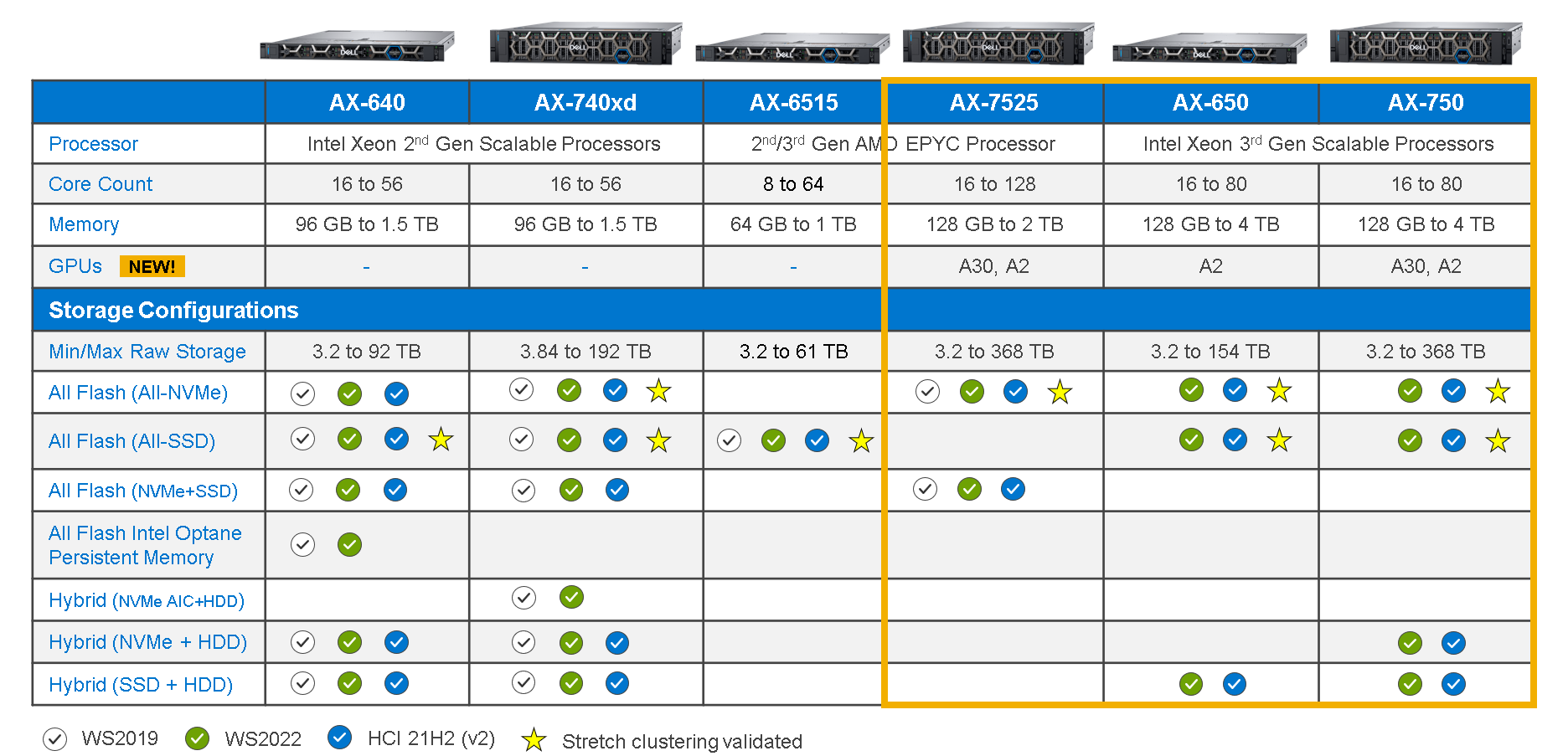
Note: AX-640, AX-740xd, and AX-6515 platforms do not support GPUs.
The next obvious question is what GPU type and number of adapters are supported by each platform.
We have selected the following two NVIDIA adapters to start with:
- NVIDIA Ampere A2, PCIe, 60W, 16GB GDDR6, Passive, Single Wide
- NVIDIA Ampere A30, PCIe, 165W, 24GB HBM2, Passive, Double Wide
The following table details how many GPU adapter cards of each type are allowed in each AX node:
Table 2: AX node support for GPU adapter cards
| AX-750 | AX-650 | AX-7525 | |
|---|---|---|---|
| NVIDIA A2 | Up to 2 | Up to 2 | Up to 3 |
| NVIDIA A30 | Up to 2 | -- | Up to 3 |
| Maximum GPU number (must be same model) | 2 | 2 | 3 |
Use cases
The NVIDIA A2 is the entry-level option for any server to get basic AI capabilities. It delivers versatile inferencing acceleration for deep learning, graphics, and video processing in a low-profile, low-consumption PCIe Gen 4 card.
The A2 is the perfect candidate for light AI capability demanding workloads in the data center. It especially shines in edge environments, due to the excellent balance among form factor, performance, and power consumption, which results in lower costs.
The NVIDIA A30 is a more powerful mainstream option for the data center, typically covering scenarios that require more demanding accelerated AI performance and a broad variety of workloads:
- AI inference at scale
- Deep learning training
- High-performance computing (HPC) applications
- High-performance data analytics
Options for GPU virtualization
There are two GPU virtualization technologies in Azure Stack HCI: Discrete Device Assignment (also known as GPU pass-through) and GPU partitioning.
Discrete Device Assignment (DDA)
DDA support for Dell Integrated System for Azure Stack HCI was introduced with Azure Stack HCI OS 21H2. When leveraging DDA, GPUs are basically dedicated (no sharing), and DDA passes an entire PCIe device into a VM to provide high-performance access to the device while being able to utilize the device native drivers. The following figure shows how DDA directly reassigns the whole GPU from the host to the VM:
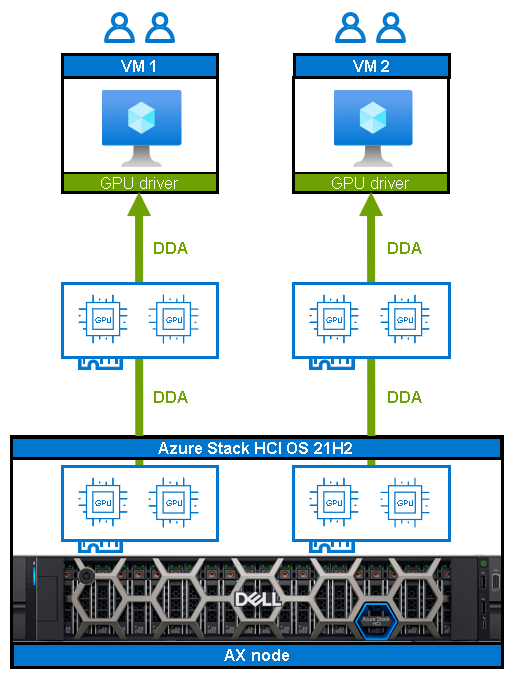
Figure 1: Discrete Device Assignment in action
To learn more about how to use and configure GPUs with clustered VMs with Azure Stack HCI OS 21H2, you can check Microsoft Learn and the Dell Info Hub.
GPU partitioning (GPU-P)
GPU partitioning allows you to share a physical GPU device among several VMs. By leveraging single root I/O virtualization (SR-IOV), GPU-P provides VMs with a dedicated and isolated fractional part of the physical GPU. The following figure explains this more visually:
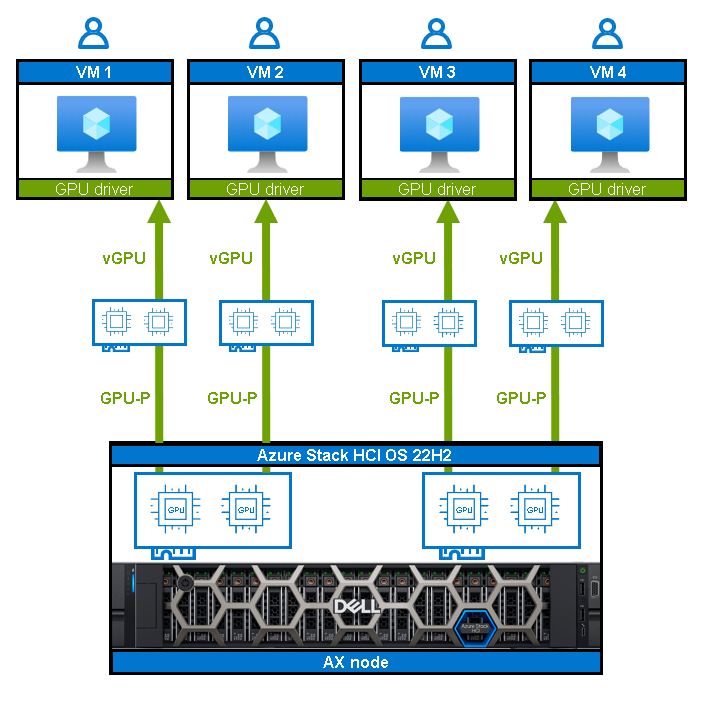
Figure 2: GPU partitioning virtualizing 2 physical GPUs into 4 virtual vGPUs
The obvious advantage of GPU-P is that it enables enterprise-wide utilization of highly valuable and limited GPU resources.
Note these important considerations for using GPU-P:
- Azure Stack HCI OS 22H2 or later is required.
- Host and guest VM drivers for GPU are needed (requires a separate license from NVIDIA).
- Not all GPUs support GPU-P; currently Dell only supports A2 (A16 coming soon).
- We strongly recommend using Windows Admin Center for GPU-P to avoid mistakes.
You’re probably wondering about Azure Virtual Desktop on Azure Stack HCI (still in preview) and GPU-P. We have a Dell Validated Design today and will be refreshing it to include GPU-P during this calendar year.
To learn more about how to use and configure GPU-P with clustered VMs with Azure Stack HCI OS 22H2, you can check Microsoft Learn and the Dell Info Hub (Dell documentation coming soon).
Timeline
As of today, Dell Integrated System for Microsoft Azure Stack HCI only provides support for Azure Stack HCI OS 21H2 and DDA.
Full support for Azure Stack HCI OS 22H2 and GPU-P is around the corner, by the end of the first quarter, 2023.
Conclusion
The wait is finally over, we can now leverage in our Azure Stack HCI environments the required GPU power for AI/ML highly demanding workloads.
Today, DDA provides fully dedicated GPU pass-through utilization, whereas with GPU-P we will very soon have the choice of providing a more granular GPU consumption model.
Thanks for reading, and stay tuned for the ever-expanding list of validated GPUs that will unlock and enhance even more use cases and workloads!
Author: Ignacio Borrero, Senior Principal Engineer, Technical Marketing Dell CI & HCI
@virtualpeli



